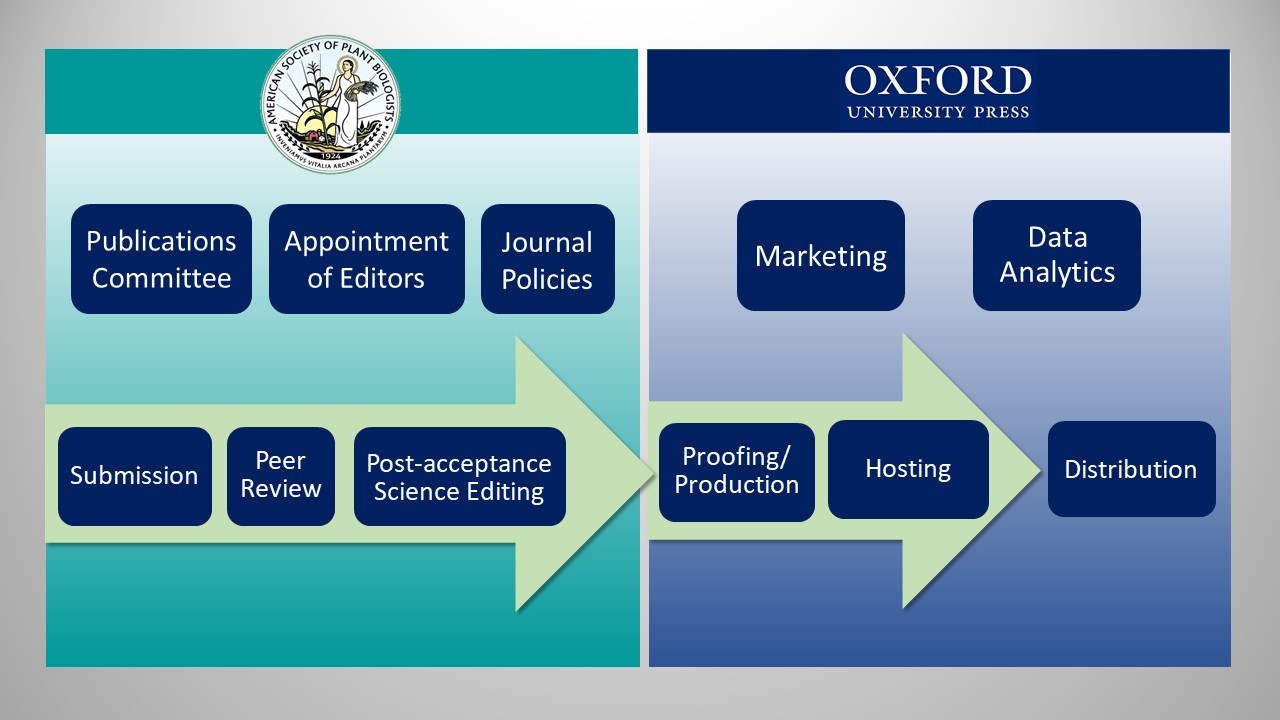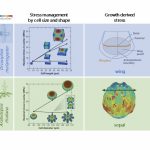Oxford University Press to publish American Society of Plant Biologists journals

Frequently Asked Questions Regarding the American Society of Plant Biologists’ Partnership with Oxford University Press
The American Society of Plant Biologists (ASPB) is delighted to announce that it will partner with Oxford University Press (OUP) to produce and disseminate the ASPB journals Plant Physiology® and The Plant Cell beginning January 2021. The following question/answer pairs are intended to address topics of interest to the ASPB and broader plant science communities regarding this partnership and the many benefits it will bring to our journals and the Society. It is a living document and will be updated periodically as new questions arise and as the ASPB/OUP partnership deepens.
If you’d like additional information or to join a discussion with ASPB’s leadership, please register for our upcoming webinar entitled Exploring ASPB’s Partnership with OUP: What Does It Mean for Me? that is scheduled for Tuesday, August 18 at noon Eastern Daylight Time. You may also access a press release, here: https://blog.aspb.org/oxford-university-press-to-publish-american-society-of-plant-biologists-journals/
The Fundamentals
Why is ASPB partnering with a large publisher?
To ensure the continued success of our journals. More specifically, ASPB has chosen to leverage a partner’s digital capabilities and deep publishing experience to create new opportunities to expand the visibility and influence of the important research being published in our journals. Such a partnership, through guaranteed royalties, mitigates the financial risks for ASPB that are associated with uncertainties inherent in the current scholarly publishing arena. It also allows the journals – and the Society – to better serve the plant science community by providing access to up-to-date technologies that allow authors to more effectively communicate their research, improve discovery of that research, and enhance the reader experience. Moreover, OUP is a strong supporter of Open Access and is developing and deploying innovative access models that ASPB will leverage in further expanding the availability and distribution of content published in The Plant Cell and Plant Physiology.
What aspects of journal operations will be retained by ASPB?
ASPB will retain all editorial operations, including peer review and editorial board management and oversight. ASPB will work with OUP to market the journals. See Members, Authors, Editors, and Readers section below for additional detail.
What aspects of journal operations will migrate to OUP?
OUP will handle subscription sales and licensing (i.e., dissemination) and production operations. OUP will also provide marketing support based on strong data analysis. See the figure and the Members, Authors, Editors, and Readers section below for additional detail.

Why OUP?
OUP is a deeply respected, mission-based organization with over 400 years of experience in academic publishing. And like ASPB, OUP is grounded in academia. OUP also hosts its journals on an innovative online platform, and it has a strong commitment to supporting and empowering authors and readers.
Has ASPB sold Plant Physiology and The Plant Cell to OUP?
Absolutely not! ASPB still owns both journals. The partnership agreement covers production and distribution only. See Business and Financial section below for additional detail.
Members, Authors, Editors, and Readers
Will the journals retain their editorial independence?
Yes; ASPB will continue to appoint editorial board members, including editors-in-chief, and any changes in submission and peer review processes will continue to be driven by the editors. The editorial boards will retain full control of journal content and editorial strategy.
In what ways will the editorial boards work with OUP?
OUP will partner with both journals’ editorial boards, using its extensive bibliometric and data analysis capabilities to inform – but not drive – strategic direction setting. OUP representatives will participate in editorial board meetings.
How will ASPB ensure the high–quality standards of the journals?
Among the reasons that OUP was attracted to the partnership with ASPB is the Society’s focus on author service and community outreach. Both parties have committed to maintaining the journals’ standards of quality, and both remain committed to providing the highest possible levels of author service, discoverability of the published work, and increasing its impact through an enhanced reader experience. ASPB plans to retain all current pre-production workflows, including post-acceptance editing by PhD-level plant scientists.
Will my complimentary ASPB member access to Plant Physiology and The Plant Cell be maintained?
Yes. ASPB members will continue to receive the privilege of complimentary access to the full content of both journals. Specific details on how these mechanisms will operate will be provided to members during the fourth quarter of 2020.
Will ASPB members continue to receive a discount on Article Processing Charges (APCs), and who will set these prices in the future?
Yes. ASPB members whose articles are published in The Plant Cell and Plant Physiology will continue to receive a discount on APCs. ASPB and OUP will work together to determine future APC pricing, for members and non-members alike.
What are the plans for the journals’ manuscript management and peer review system?
Plant Physiology and The Plant Cell currently conduct peer review via eJournal Press. During 2021, this functionality will migrate to Editorial Manager. Authors and reviewers will be able to access manuscripts that are under review and/or in revision throughout the transition.
Will authors whose papers were declined by Plant Physiology or The Plant Cell still be able to transfer their manuscripts to Plant Direct?
Beginning in July 2020, authors who have submitted an article to any of ASPB’s three journals can transfer their submission to another journal in the ASPB family of titles. So, yes, authors of articles declined by Plant Physiology or The Plant Cell may still opt to transfer those articles to Plant Direct, and authors of manuscripts declined by any of these journals can opt to have them considered by any other ASPB journal.
Will the migration to a new platform affect the citations to my paper, and will the DOI or URL change?
No, the migration of production operations to OUP will not affect citations to your work, and the article DOIs will remain the same. Regarding URLs, OUP will set up redirects from current URLs to new URLs on the Oxford Academic platform, preserving the functionality of existing reader bookmarks. In addition, copies of all articles published in The Plant Cell and Plant Physiology will continue to be available through PubMed Central (PMC) and Europe PMC.
Will my papers still import directly into my ORCiD record?
Yes; OUP has partnered with ORCiD since its inception, and all ORCiD-related workflows will be retained or improved upon.
Business and Financial
Why is this a good business decision for ASPB?
Our agreement with OUP includes guaranteed royalty income streams, and it leverages OUP’s broad global subscriber base. Moreover, OUP is a strong supporter of Open Access and is developing and deploying innovative access models that ASPB will leverage in further expanding the availability and distribution of content published in The Plant Cell and Plant Physiology.
Will Plant Physiology and The Plant Cell be bundled with other journals sold by OUP, and will it become more difficult for libraries to purchase access?
The ASPB journals will become part of the portfolio that OUP markets and distributes. However, there are many different models via which any given institution might purchase access, including the capacity to purchase Plant Physiology and The Plant Cell independent of other OUP offers. Librarians will be able to select an option that best fits their needs, making it easier for companies and institutions to acquire access to the journal content.
How is ASPB’s partnership with OUP similar or different from the Society’s agreement with Wiley regarding Plant Direct?
Plant Direct is co-owned by ASPB, Wiley, and the Society for Experimental Biology (SEB). It is published by Wiley, and all aspects of its operation are overseen by a management committee comprising representatives from ASPB, SEB, and Wiley. All three of these entities have an ownership stake in the journal, although editorial control resides with the editor-in-chief and the editorial board.
Where will the journals be hosted online?
Plant Physiology’s and The Plant Cell’s content will migrate from their current hosting platform, HighWire Press to OUP’s innovative Oxford Academic platform on Silverchair.



